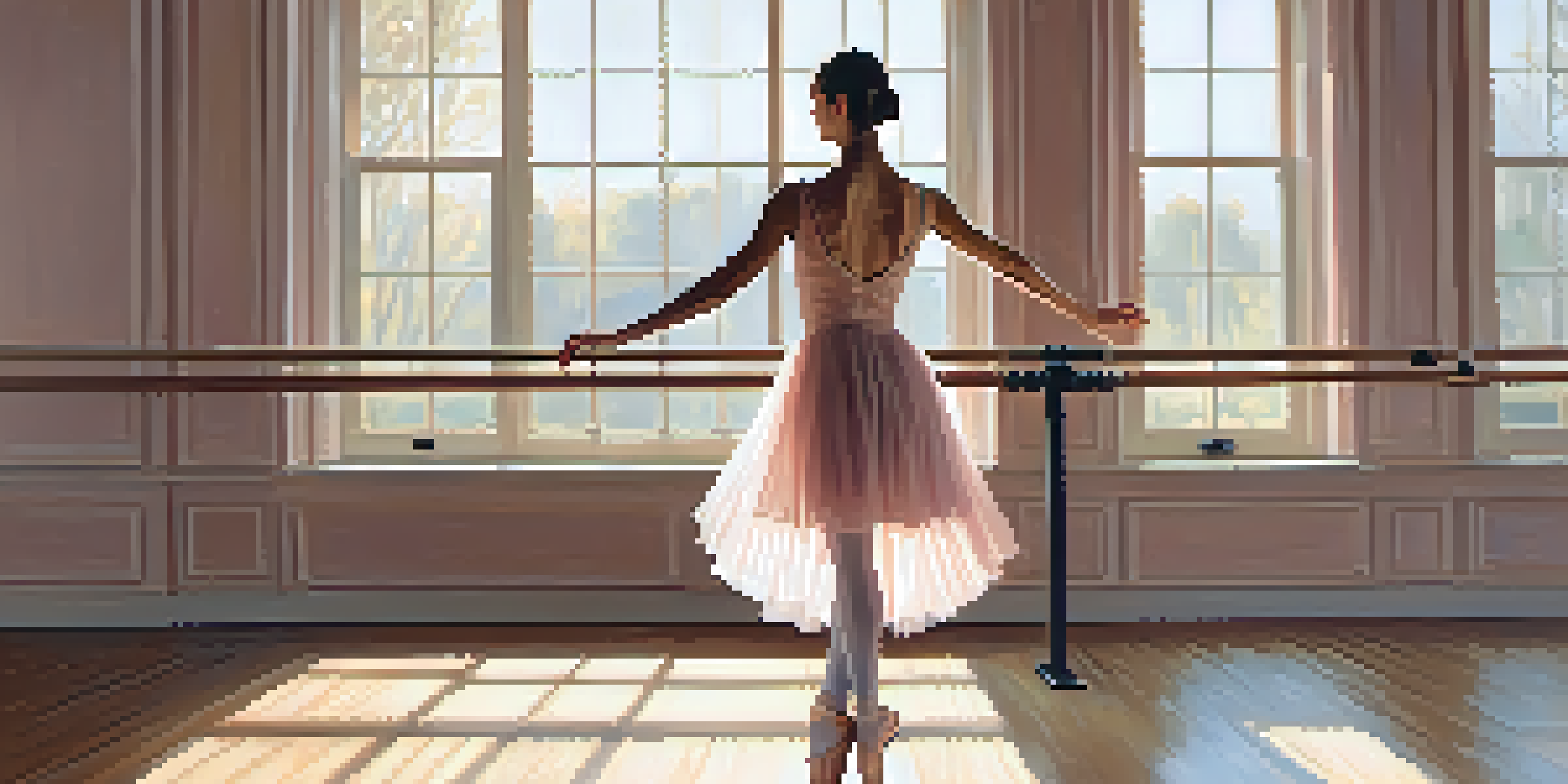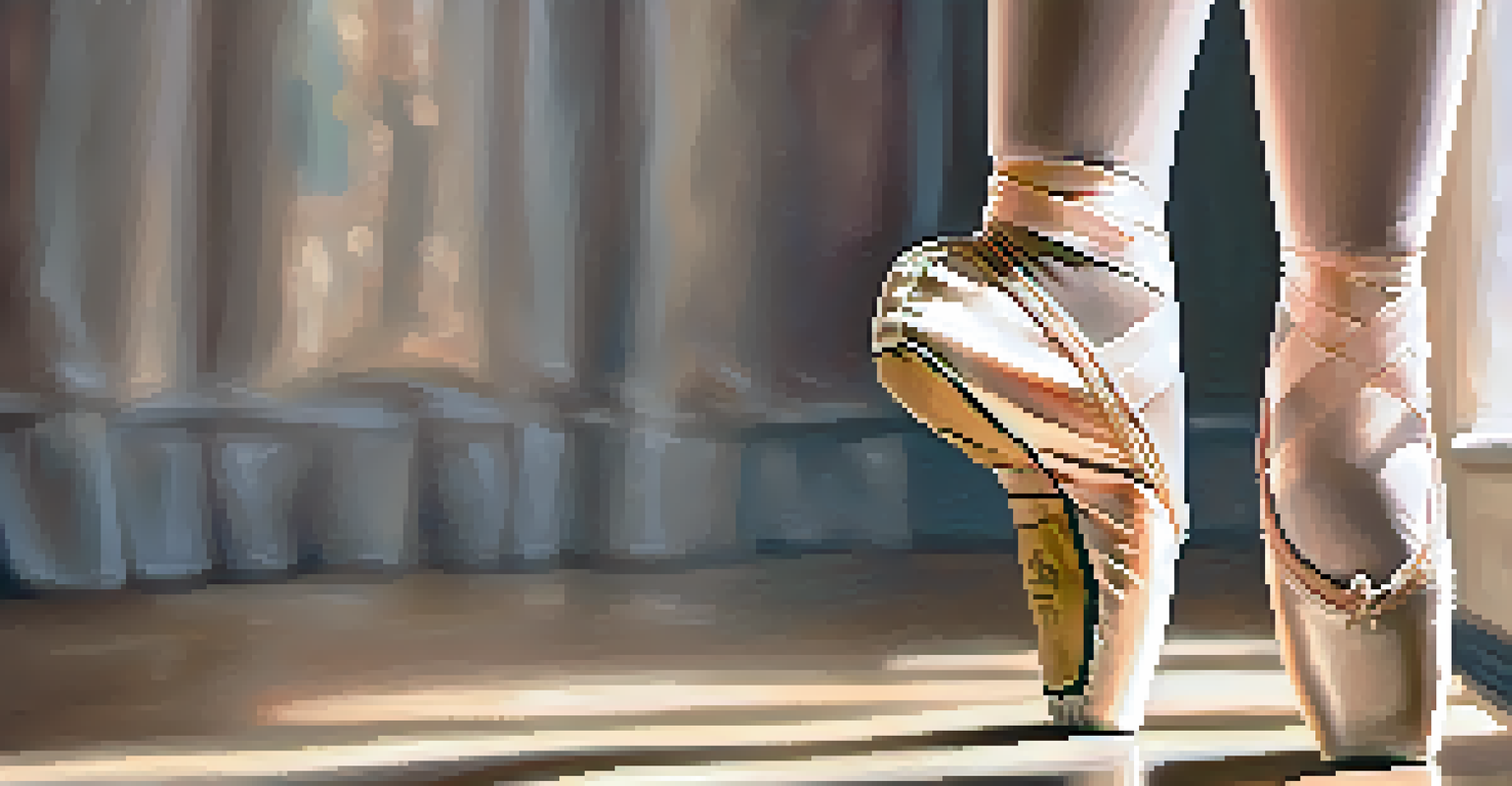The Importance of Proper Warm-Up in Ballet Training

What is a Warm-Up and Why It Matters in Ballet
A warm-up is the process of preparing your body for physical activity, and in ballet, it’s crucial. This involves performing gentle movements to increase blood flow and warm the muscles. Without a proper warm-up, dancers risk injuries like strains or sprains, which can sideline them for weeks.
The more you practice, the better you get, the more freedom you have to create.
Think of warming up like prepping a car before a long drive; you wouldn’t hit the road without checking the oil and tires first. In ballet, warming up helps improve flexibility and range of motion, making those high jumps and pliés much easier. Ultimately, a good warm-up sets the foundation for a successful training session.
By taking the time to warm up, dancers not only protect their bodies but also enhance their performance. It’s a simple yet effective way to ensure that each class or rehearsal is productive and enjoyable.
Physical Benefits of Warming Up for Dancers
Warming up provides essential physical benefits that every dancer needs. It increases muscle temperature, which enhances elasticity and reduces stiffness. This means that when you attempt intricate steps, your body responds more fluidly, reducing the risk of injury.

Additionally, warming up helps to activate the muscles you’ll be using during your class. For instance, focusing on the core and leg muscles prepares your body for the demanding movements of ballet. It’s like tuning a musical instrument before a performance; everything sounds better when it’s in sync.
Warming Up Prevents Injuries
A proper warm-up prepares dancers physically, reducing the risk of strains and sprains.
Moreover, a proper warm-up can also improve circulation. Better blood flow means that more oxygen reaches your muscles, which is essential for endurance during those long rehearsals. With improved circulation, you’ll likely find that your body feels more energized throughout your practice.
Mental Preparation Through Warm-Up Exercises
A warm-up isn’t just about the body; it’s also about the mind. Engaging in warm-up routines allows dancers to shift their focus away from distractions and into the dance space. This mental preparation is vital for achieving peak performance.
Success is where preparation and opportunity meet.
When you go through a warm-up, you mentally rehearse the movements you’ll be performing. This visualization can boost confidence and help you execute your routine with greater precision. Imagine a painter sketching their ideas before applying the final brushstrokes; the same concept applies to dancers warming up.
Moreover, warming up can help reduce performance anxiety. As you become more attuned to your body and the space around you, you’ll likely feel more grounded and ready to tackle any challenge that comes your way during practice.
Common Warm-Up Techniques for Ballet Dancers
Various warm-up techniques can be effective for ballet training. A common approach includes gentle stretches and pliés to gradually increase flexibility. Starting with simple movements allows your body to adjust before diving into more complex choreography.
Another popular technique is focusing on the core through exercises like abdominal contractions. Strengthening your core not only supports balance but also helps in executing turns and jumps more effectively. It’s akin to building a strong foundation for a house; everything else rests upon it.
Enhances Performance and Focus
Warming up not only prepares the body but also helps dancers mentally rehearse movements, boosting confidence and precision.
Additionally, incorporating barre exercises into your warm-up routine can be beneficial. These exercises help reinforce proper alignment and technique, ensuring that you’re ready for the demands of ballet. The key is to find a combination of movements that works best for you.
Incorporating Warm-Up into Your Daily Regimen
Making warm-up exercises a regular part of your ballet routine is essential. This means dedicating time before every class or rehearsal to properly prepare your body. Consider it as a non-negotiable step in your training, much like wearing the right shoes.
Try to establish a consistent warm-up routine that you enjoy. Whether it’s a favorite set of stretches or a specific sequence at the barre, having a plan can make the process smoother. The more you practice these routines, the more instinctual they will become.
Additionally, remember that a warm-up isn’t one-size-fits-all. Listen to your body and adjust your routine based on how you feel each day. This flexibility ensures that you’re always working towards your best performance.
The Role of the Instructor in Warm-Up Sessions
Instructors play a vital role in guiding warm-up sessions. They can tailor the routine to meet the specific needs of their students, ensuring everyone is adequately prepared. A knowledgeable instructor understands the importance of warming up and emphasizes it in their classes.
Moreover, instructors can introduce new warm-up techniques that students might not be familiar with. This variety keeps things interesting and can prevent the routine from becoming mundane. It’s similar to a chef experimenting with new ingredients to create an exciting dish.
Instructor Guidance is Key
Instructors play a crucial role in tailoring warm-up routines to meet students' needs and ensure proper techniques.
Additionally, instructors can monitor students during warm-up sessions to ensure they’re using proper techniques. This guidance helps prevent injuries and instills a sense of safety among the dancers, creating a supportive environment for everyone.
Conclusion: The Lasting Impact of a Good Warm-Up
The importance of a proper warm-up in ballet training cannot be overstated. It’s the foundation upon which dancers build their skills and artistry. By prioritizing warm-ups, dancers can enhance performance, reduce injury risks, and cultivate a positive mindset.
Ultimately, think of warming up as an investment in your dance journey. Just as a gardener nurtures their plants to blossom, dancers need to care for their bodies and minds before stepping into the spotlight. A good warm-up leads to better outcomes in both practice and performance.

So, the next time you step into the studio, remember that taking a few extra minutes to warm up can make all the difference. Embrace the process, and watch your ballet training flourish.